On the occasion of the 120th anniversary of the birth of the famous mathematician János Neumann, the Neumann Society announced a memorial year for 2023. In collaboration with the University of Óbuda, the Hungarian Academy of Sciences, the Fasori Lutheran Secondary School and many other institutions, several conferences, exhibitions and other events are expected this year, which aim to bring Neumann's scientific achievements and intellectual heritage closer to the domestic public. In this article, on the 66th anniversary of his death, Pestbuda presents his ties to Budapest, all the places that were a spiritual and cultural breeding ground for him.
János Neumann was born on 28 December 1903 in the Hungarian capital and died on 8 February 1957 in Washington. He was born into a wealthy bourgeois family: his father Miksa Neumann worked at a bank as a lawyer and then as a director. His mother, Margit Kann, ran the household and raised the children, as the firstborn János was followed by his two brothers, Mihály (1907) and Miklós (1911).
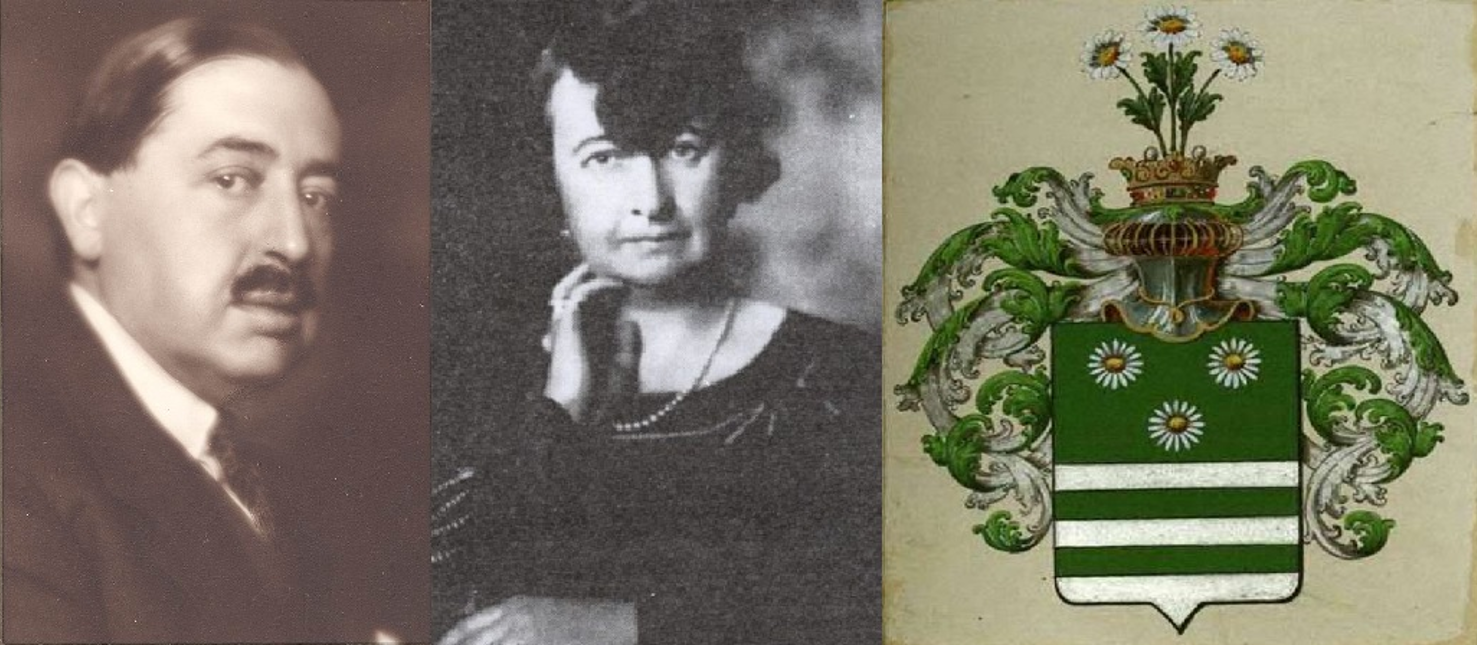
The parents around 1920: Miksa Neumann and Margit Kann (Source: Wikibooks). To the right, the coat of arms of the Neumann Family (Source: Wikimedia Commons)
In 1913, Miksa Neumann succeeded in raising his family to the rank of nobility by the Hungarian King, Franz Joseph I. Their home was in an 18-room high-class apartment in Lipótváros, on the corner of Báthory Street and today's Bajcsy-Zsilinszky Road (the latter had the two former names of Váczi Boulevard and Vilmos Császár Road, those changed several times until 1945). The building was built by János Neumann's maternal grandfather, Dr Jakab Kann, and his business partner, Gyula Heller. The designer was Rezső Nay, the contractor was Ferenc Novák.
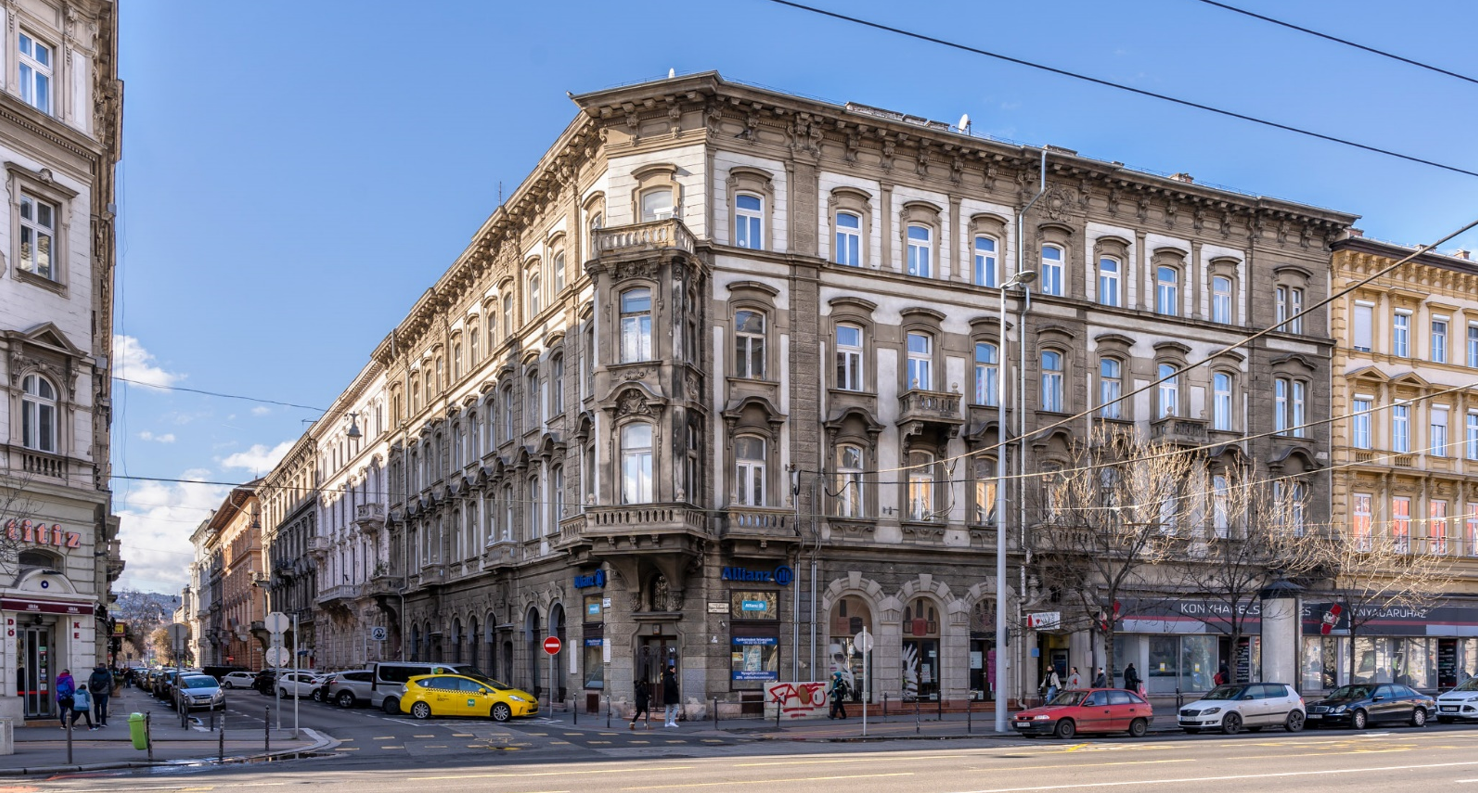
The home of the Neumann Family was in the corner house at the intersection of today's Bajcsy-Zsilinszky Road and Báthory Street (left). Today, it is 62 Bajcsy-Zsilinszky Road (Photo: Balázs Both/pestbuda.hu)
The parents provided the children with the highest quality upbringing and education. The father earned so well that language teachers were called from abroad for the boys. Thus, János Neumann acquired knowledge of, for example, French, German and Latin from a very young age, but as a boy, he could also converse with his father in ancient Greek.
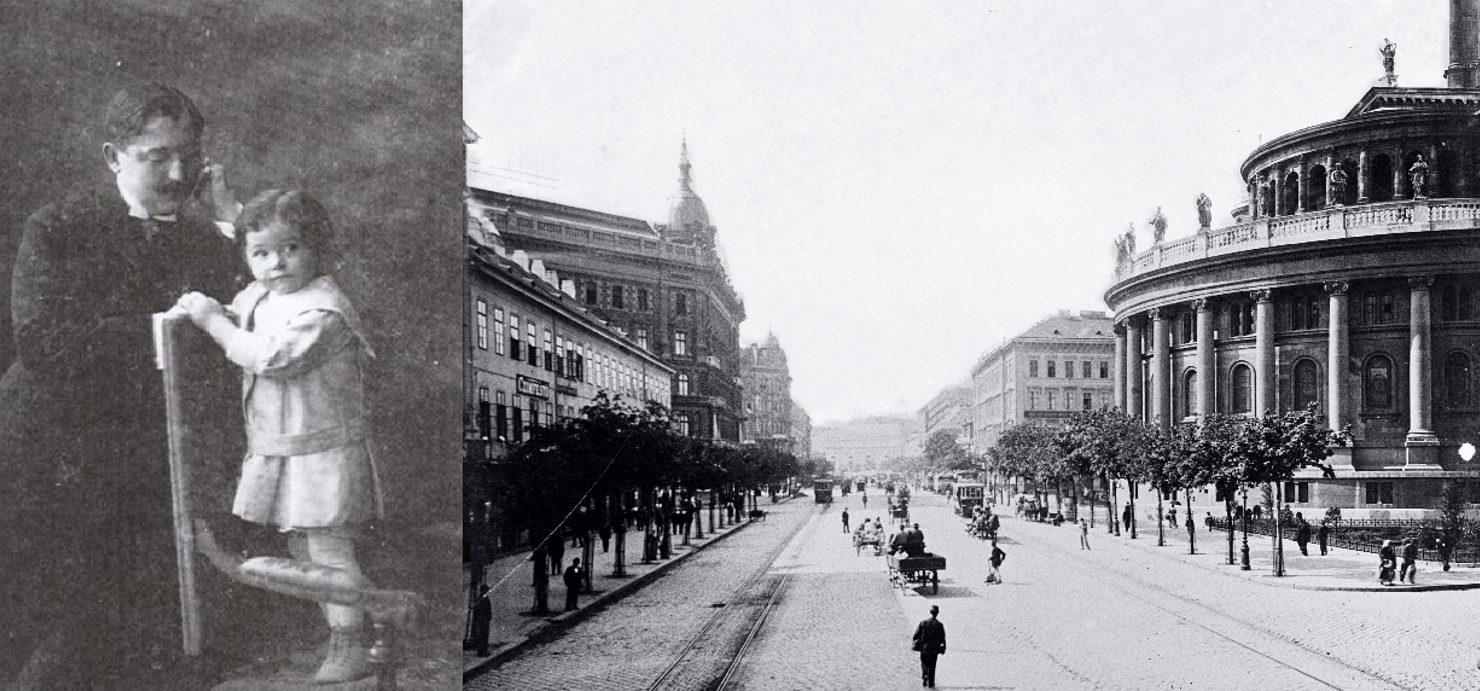
The child János Neumann with his father (Source: Wikibooks) and the southern section of today's Bajcsy-Zsilinszky Road in 1905. A similar sight greeted the little boy every time he came out of the residential building (Source: Fortepan/Hungarian Geographical Museum)
Neumann was receptive to all kinds of intellectual knowledge, he "devoured" the cultural and scientific books he received from his father. They soon discovered his exceptional arithmetic skills, he could multiply multi-digit numbers together in his head. He had a photographic memory: after reading classical works such as Faust in several languages, he could recite pages verbatim. He also loved history: he delved so much into the knowledge of Byzantium and the Renaissance that he was able to successfully debate them with experts on the subject as an adult.
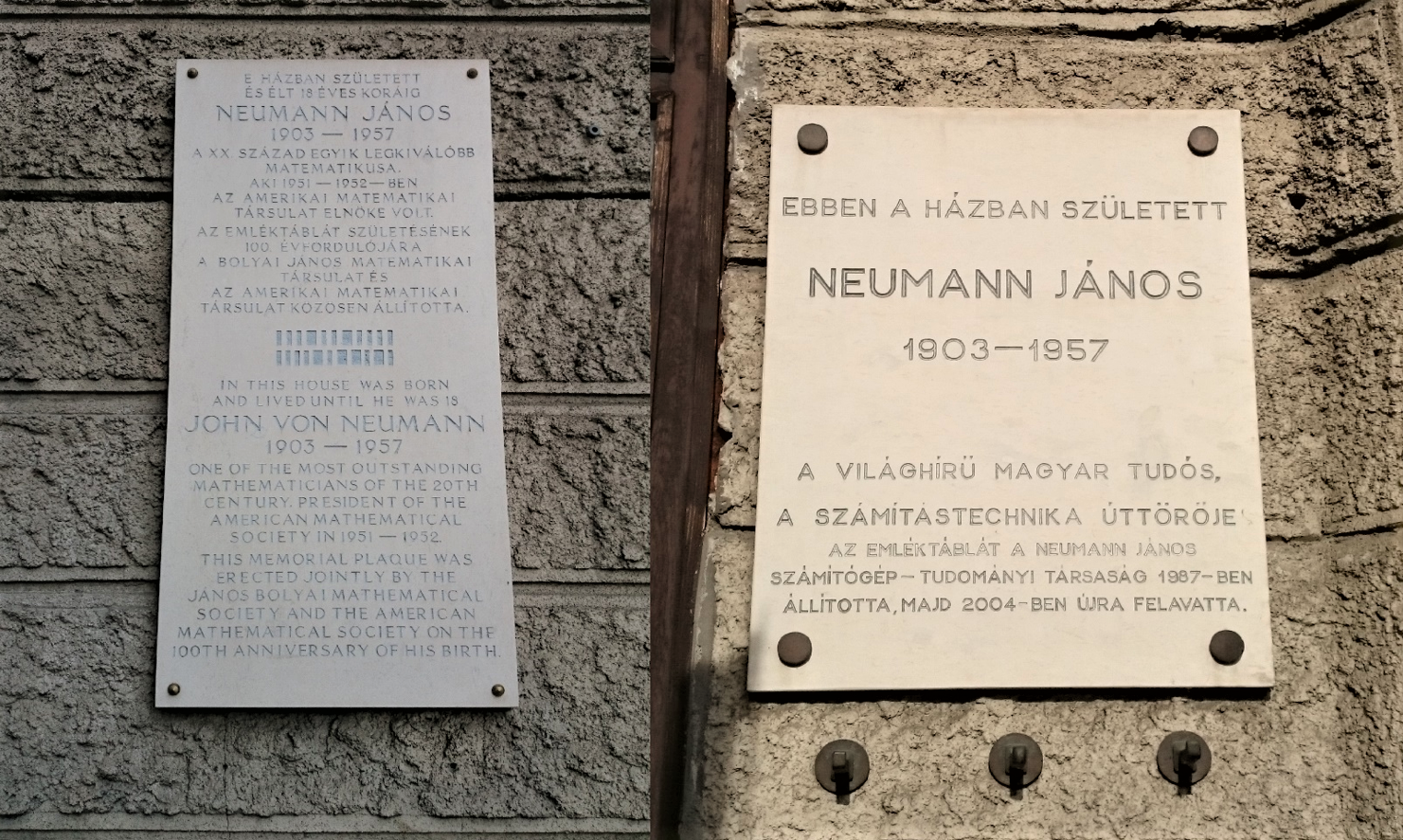
On the Báthory Street wall of the house also inhabited by the Neumann Family, two memorial plaques preserve the memory of the genius (Photo: Dávid Mészáros/pestbuda.hu)
Neumann's childhood was filled with love and financial carelessness. Although the family fled abroad during the Hungarian Soviet Republic, the young boys experienced it more as a long adventurous vacation (for example, they visited Opatija, Croatia and Venice, Italy).
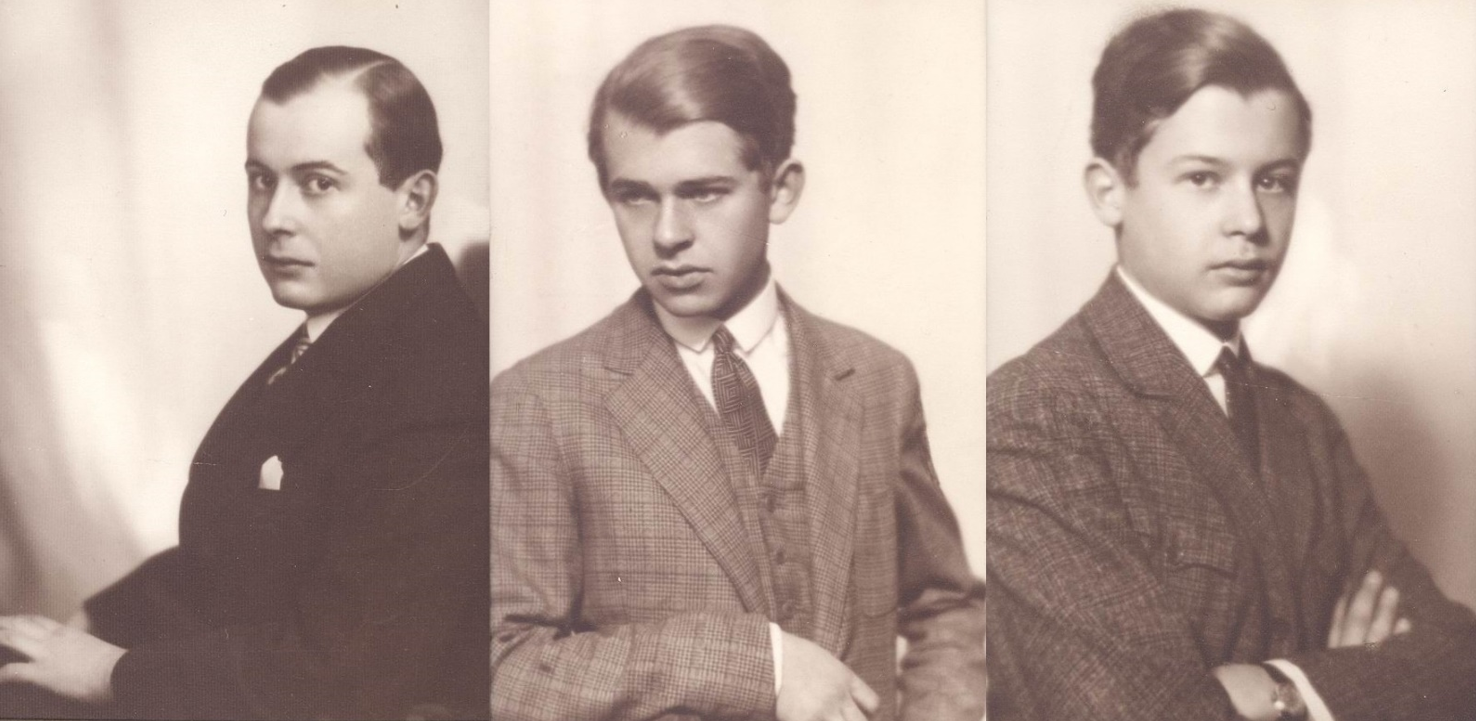
The Neumann brothers around 1920. Later, all three moved to the United States: (from left to right) János became a mathematician, Mihály an engineer, Miklós a lawyer (Source of images: Wikibooks)
In 1913, his father enrolled János in one of the best high schools in the country, and even in the world: the Budapest-Fasori Lutheran Secondary School was considered one of the most famous and internationally recognised institutions of the early 20th century. One of the keys to his success was his exceptionally knowledgeable teachers, several of whom were members of the Hungarian Academy of Sciences.
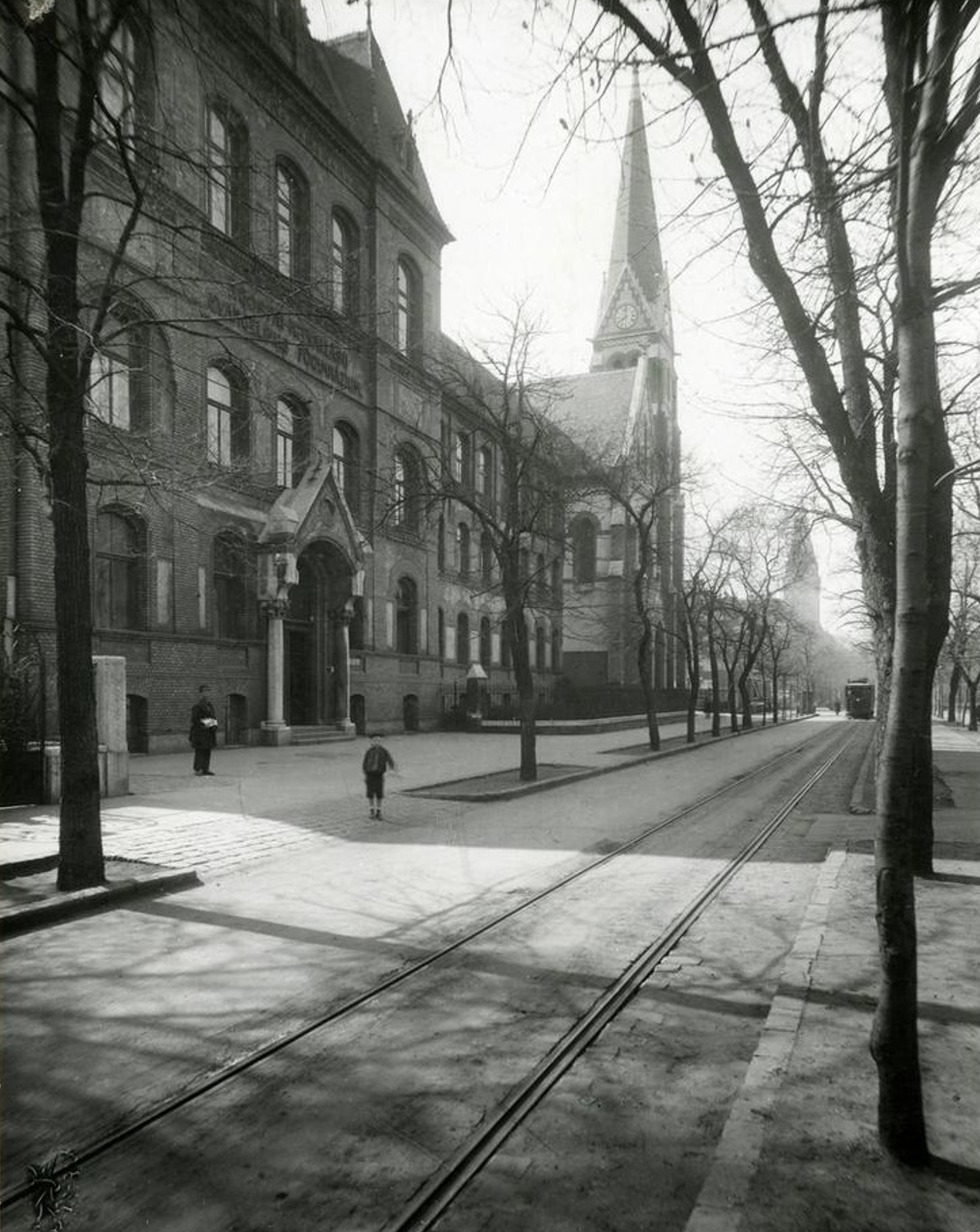
The combination of the Fasori Lutheran Secondary School and the church was built according to the plans of Samu Pecz in the early 1900s, when there was even a tram here (Source: FSZEK Budapest Collection)
The other important factor was the openness and enlightened attitude of the institution, thanks to which Neumann was able to get in: although it was maintained by the Lutheran Church, a large number of even Jewish children were admitted to the school (for whom special Hebrew lessons were also provided). The school was a real child prodigy training institute, who attended and studied well, there was a good chance that they made it later in life.
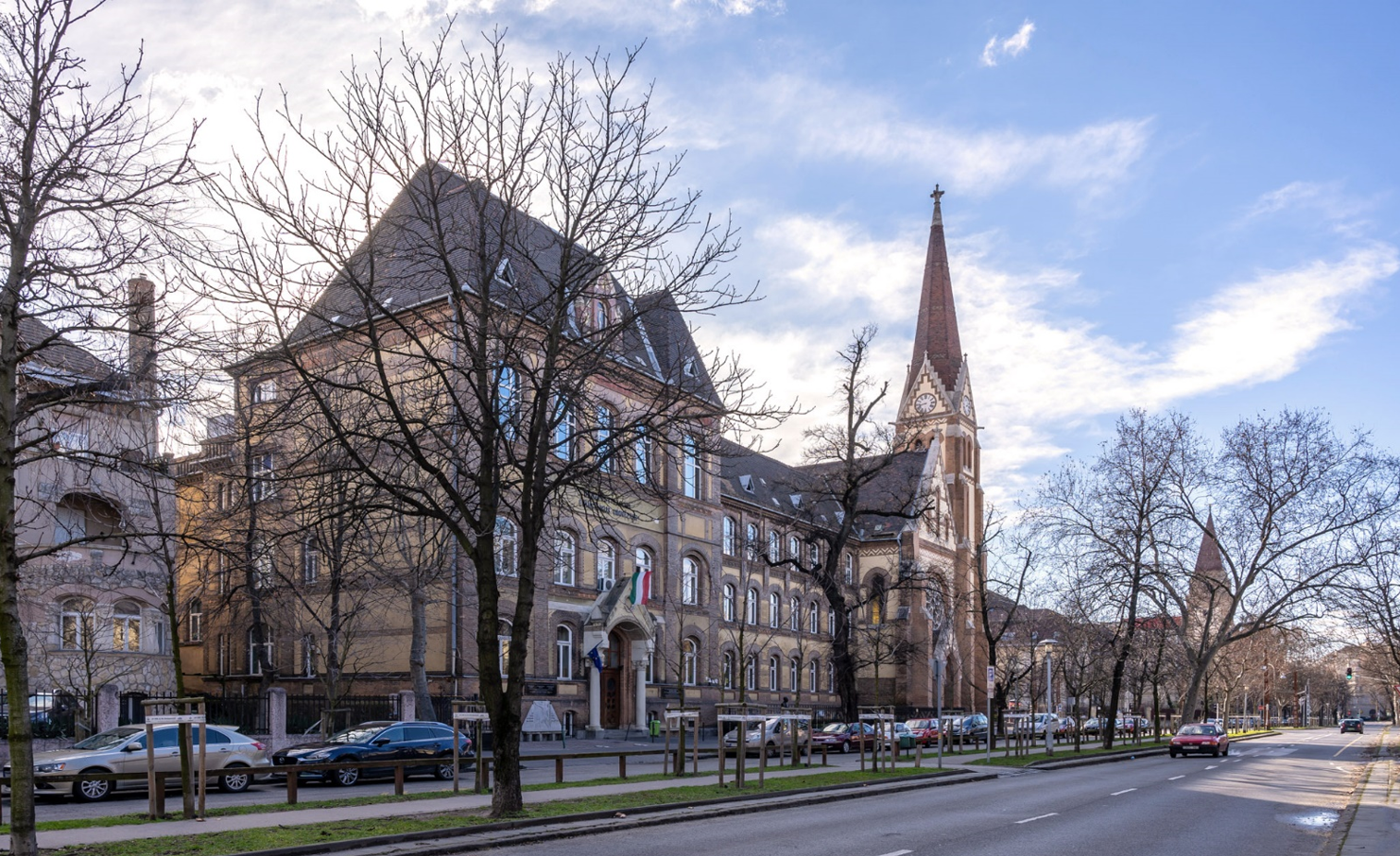
The secondary school nowadays. Its operation was made impossible by the communists, but education resumed after the change of regime (Photo: Balázs Both/pestbuda.hu)
His former schoolmates said about Neumann that he had a very lively personality, and although he did not excel in sports, he was interested in everything related to learning about the world. His exceptional talent for arithmetic was no longer a secret, during the breaks between lessons he often "hunted" for his mathematics teacher, László Rátz so that he could consult with him until the next bell.
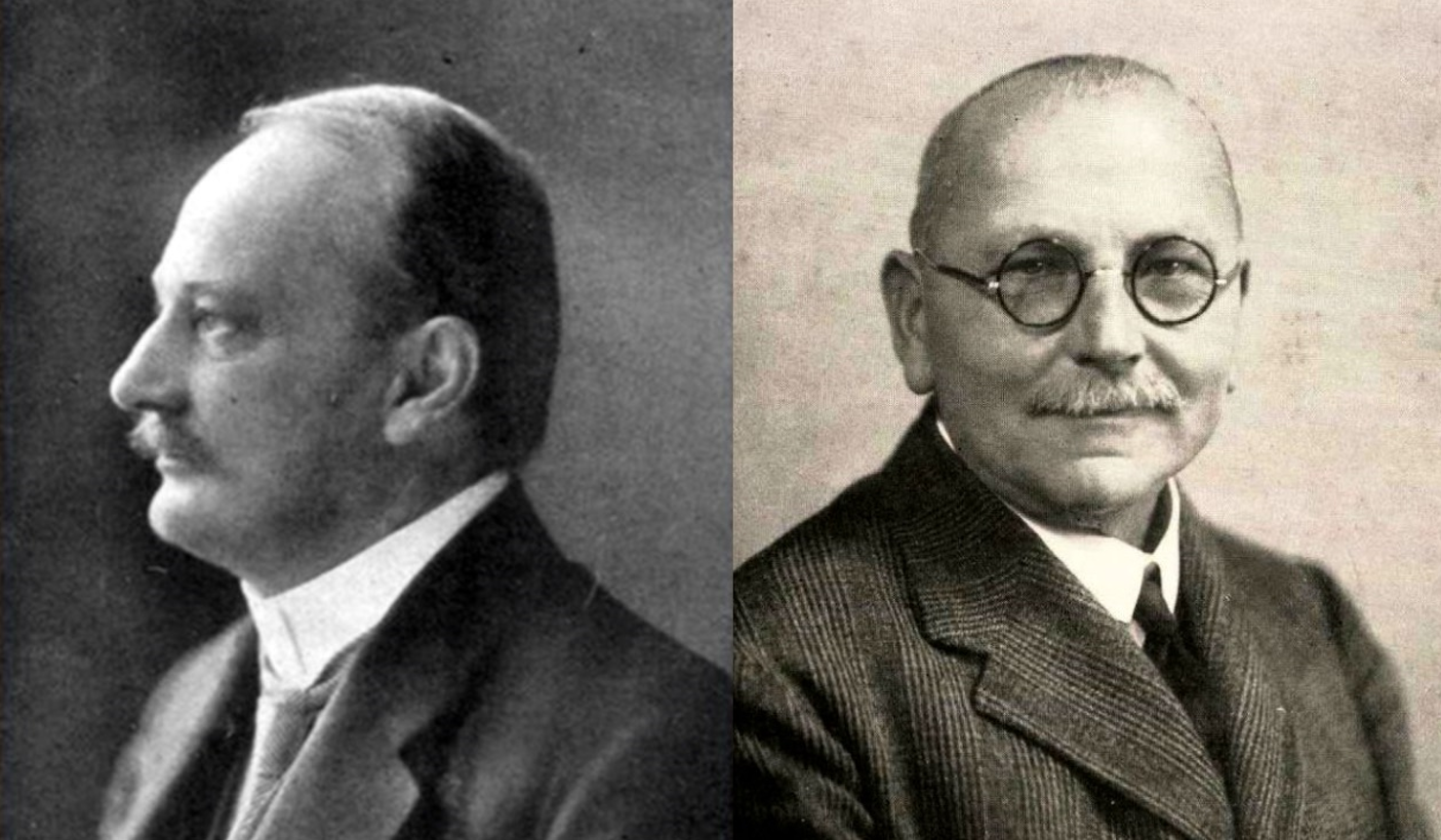
The secondary school teachers who had the greatest impact on Neumann: (from left to right) László Rátz was an innovator in the teaching of mathematics, Sándor Mikola in experimental physics (Source of images: Wikimedia Commons)
He was still far from graduation when Rátz personally visited Neumann's parents, telling them that this boy should go to university, and if necessary, he would get private university tutors for him. Neumann was also inspired by the knowledge and practical teaching of physics teacher Sándor Mikola. It was here that he met his later colleague, Jenő Wigner, who many years later remembered him as follows:
“[…] I worked for two weeks on a [...] math problem and I could not get it to work. I met Jancsi Neumann and complained to him. He listened to me in great detail, asked a few questions, but it was clear that he wanted to understand what the problem was. He understood. Then he left, […] he looked up […] at the corner of the room at the ceiling, and there he muttered something […] that I did not understand. He muttered, muttered, for maybe five minutes, maybe ten minutes. He came back after ten minutes with the solution. And this happened more than once [...] This really, really shook me and filled me with great admiration."
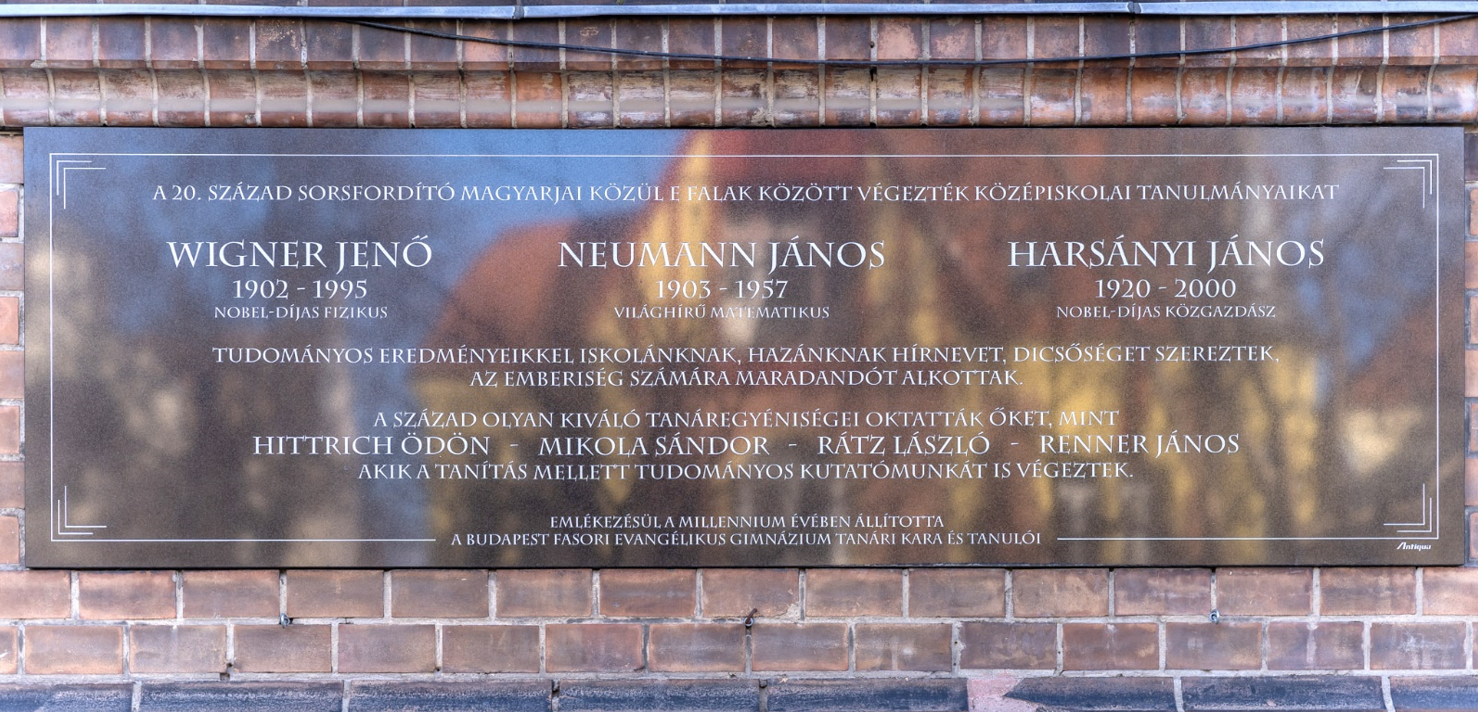
Names of famous students and their teachers at the main entrance of the secondary school (Photo: Balázs Both/pestbuda.hu)
Neumann had a joking nature, he liked to show off. He loved jokes so much that he collected them in a notebook from his youth (during his later American years he regularly took them out to entertain the company). His former classmate Andor Chatel told about Neumann:
"Péter Domony was his seatmate and best friend, they were always together. He liked to have bag fights during the breaks and after school, they went home together along Bajza Street […] and even there the frolics went on.”
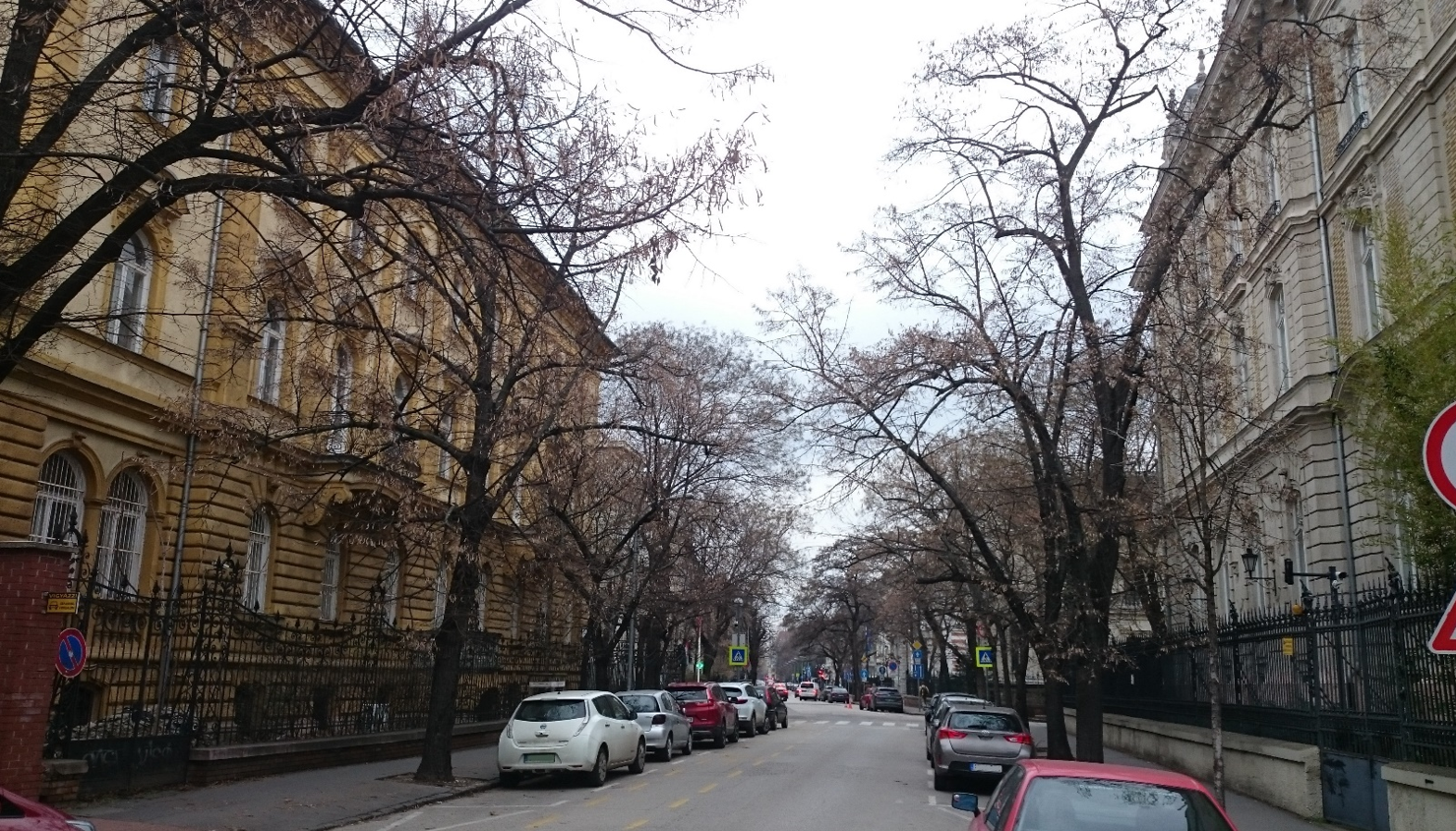
A cosy part of Bajza Street in the direction of Andrássy Avenue and the Terézváros villa district. This is where Neumann walked home from secondary school (Photo: Dávid Mészáros/pestbuda.hu)
He graduated in 1921 (at the age of 17) and enrolled at the University of Budapest, which was renamed Pázmány Péter University in the same year. He was admitted to the mathematics major, with minors in physics and chemistry (it is interesting that at that time the mathematics major was part of the institution's faculty of humanities). His genius is indicated by the fact that he completed this training in parallel with other universities (one in Berlin and one in Zurich), so he was no longer constantly in the country. Finally, he graduated in Budapest in 1925 and received his doctorate in 1926 (at the age of 22). During his university years, he was assisted by mathematical authorities such as Lipót Fejér, Mihály Fekete, József Kürschák and Gábor Szegő.
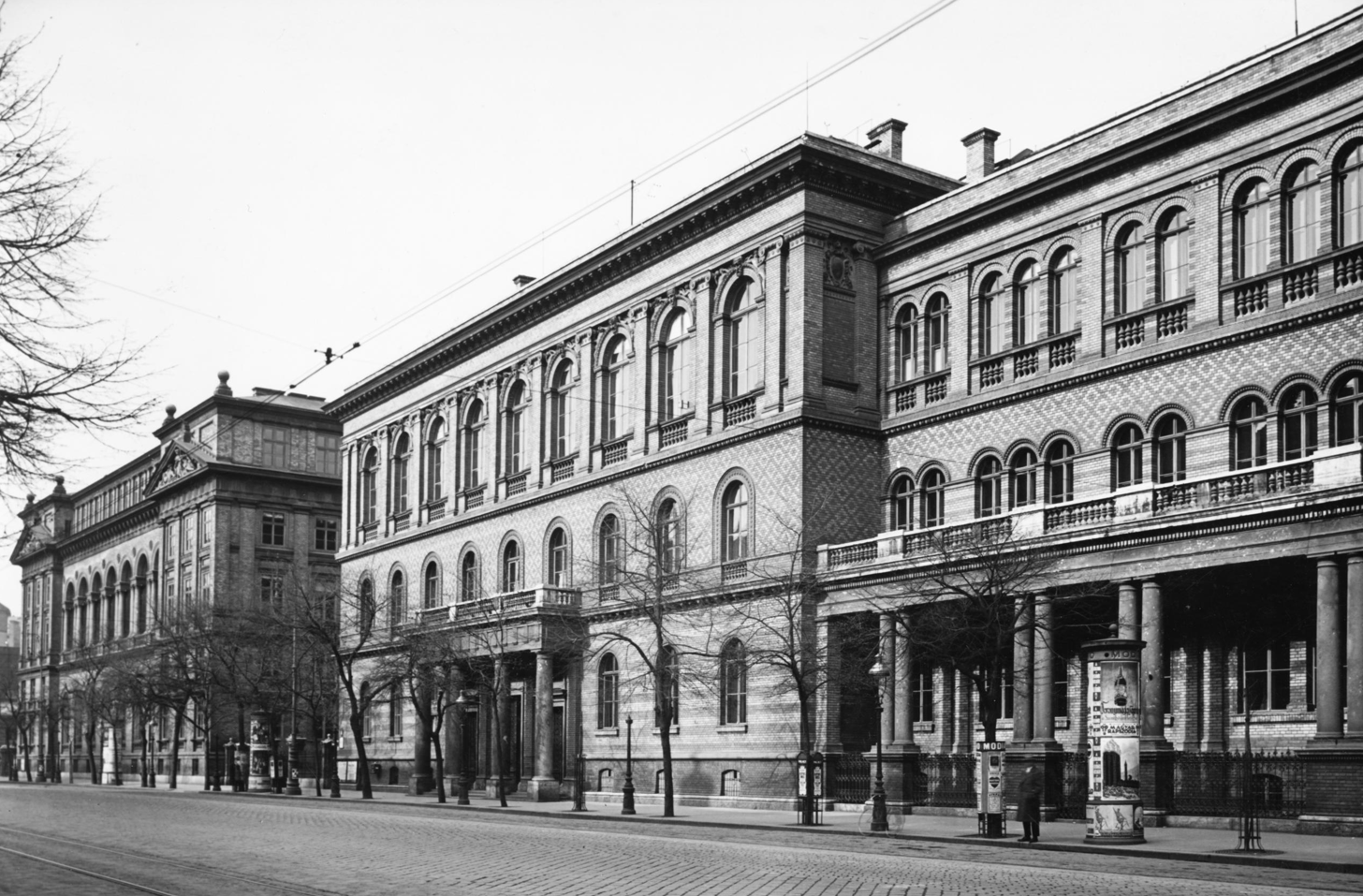
Between 1921 and 1950, Eötvös Loránd University was called Pázmány Péter University. The picture shows the buildings of the institution's humanities faculty seen from Múzeum Boulevard in 1940 (Source: Fortepan)
In the 1920s, he mostly lived abroad but spent many summers in the family's summer house in Svábhegy with his parents and siblings. On one of the glass windows of the house was painted the extended coat of arms of the family, which included the childhood totem animals of the three boys: János's was the rooster, Mihály's the rabbit, Miklós's the cat. At that time, the banker father did not sign a single serious business contract without his son: he showed János everything he could, and he always had constructive advice.
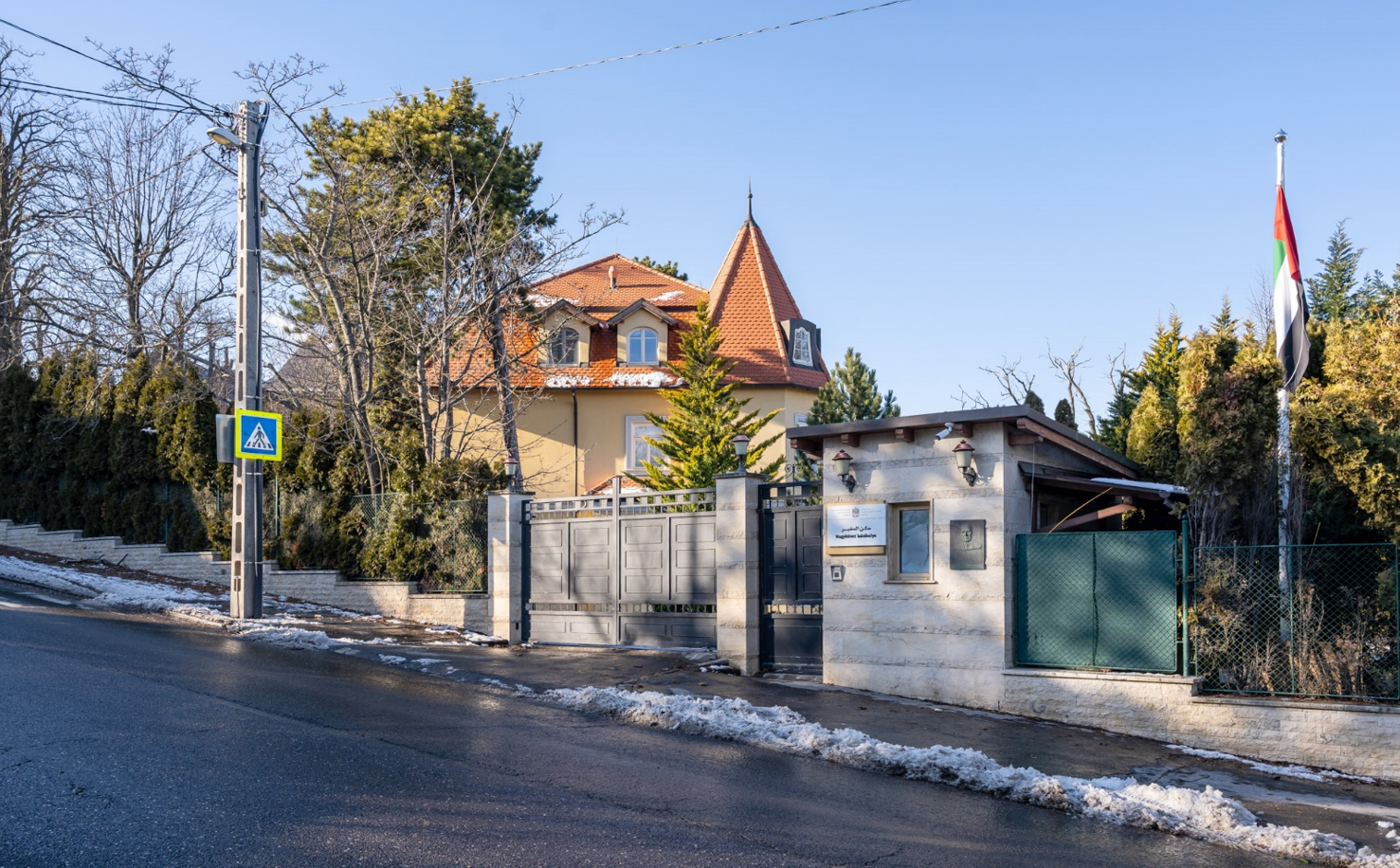
The former Neumann summer house in Eötvös Street in the 12th District. Nowadays it is an ambassador's residence (Photo: Balázs Both/pestbuda.hu)
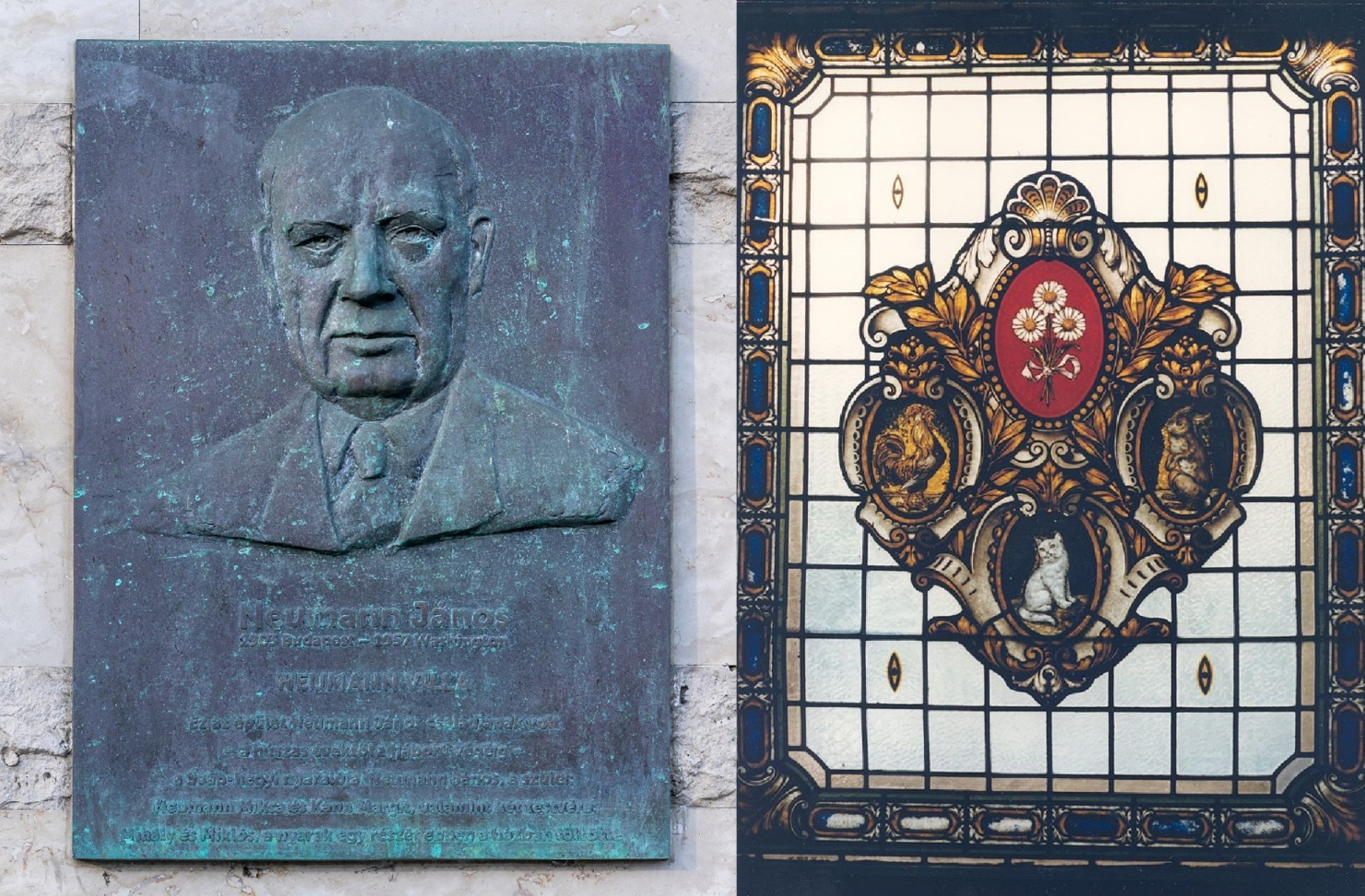
Memorial plaque at the entrance (Photo: Balázs Both/pestbuda.hu) and the Neumann coat of arms painted on a former glass window of the house (Source: Wikibooks)
Neumann married twice: before leaving Budapest, he married Marietta Kövesi. They had a daughter in the USA, but they divorced in 1937 after 7 years of marriage. A year later, Neumann briefly returned to the Hungarian capital. It was then that he met Klára Dán, with whom they got married in 1938, and then lived together in Princeton.
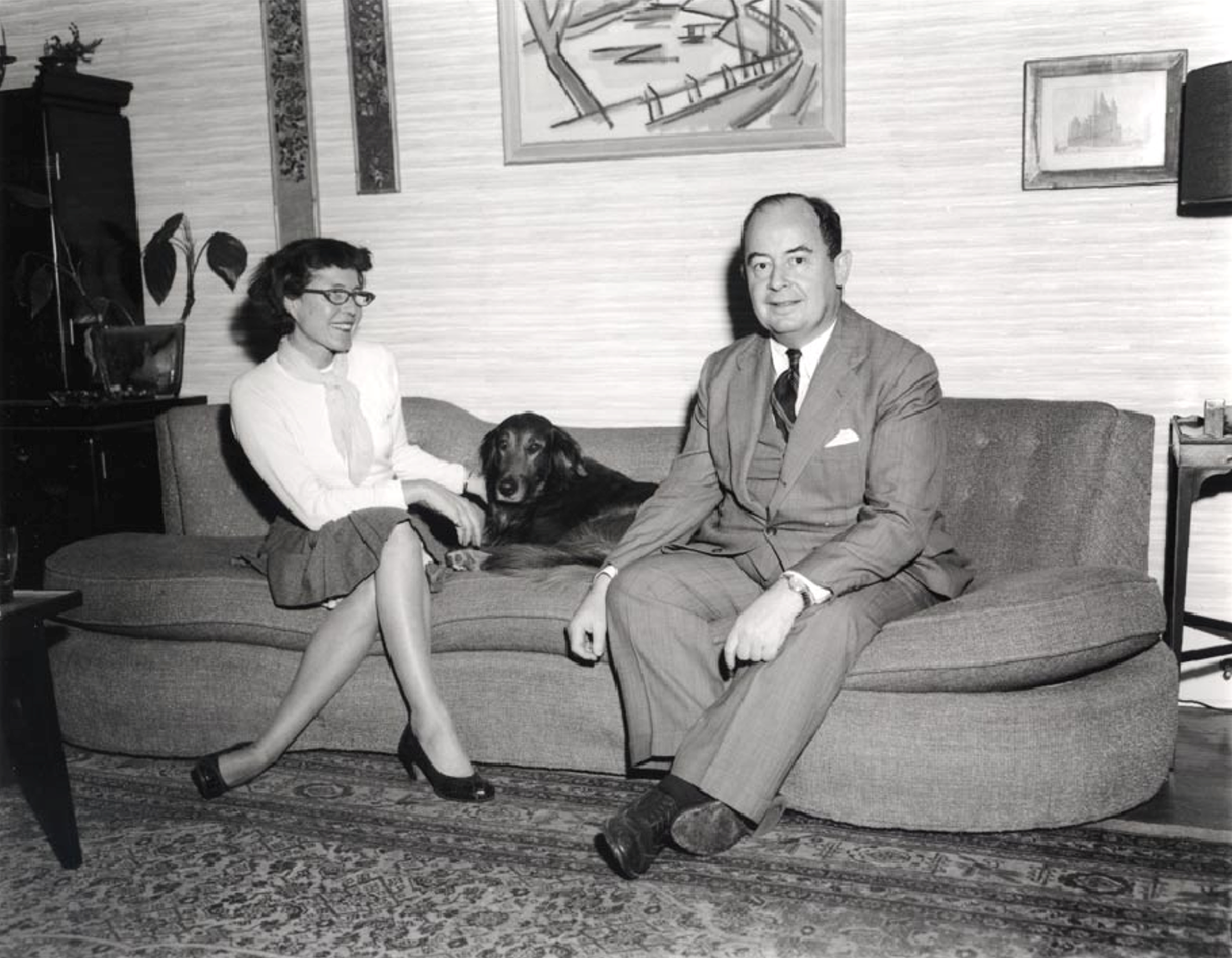
The second wife of János Neumann, Klára Dán, also from Budapest, became one of the first programmers in history (Source: Wikibooks).
The rest is history beyond Budapest: Neumann proved that human motivations can be described in the language of mathematics (game theory), and abroad he was able to work with the world's most outstanding scientists and industrial specialists, who regularly asked for his advice. He participated in the most important nuclear researches and was also an epoch-maker in computer technology.
One of the wonders of Budapest at the beginning of the 20th century is the intellectual and cultural breeding ground that this place and era were able to offer to its students. It is a unique phenomenon that a single city could give the world so many internationally renowned inventors and thinkers in such a short time. Talents of mostly Jewish origin who left for America due to European tensions are also called "Marsians" by posterity. The term is associated with one of them, Leo Szilárd after he answered the question of his Italian colleague, Enrico Fermi, why there is no evidence for the existence of intelligent beings living on Mars. "They are already here among us, they just call themselves Hungarian." - answered Szilárd. Neumann himself was such a "Marsian", as well as Jenő Wigner, Tódor Kármán, Ede Teller and many others. Several of them also claimed that Neumann was the most brilliant mind. As Ede Teller put it:
"Some of us are addicted to thinking, for others it becomes a necessity. […] János Neumann enjoyed thinking.”
Cover photo: The young János Neumann (Source: Wikimedia Commons) and a 1904 photo of the mouth of Bajcsy-Zsilinszky Road to Deák Square (Source: Fortepan/Budapest Archives)

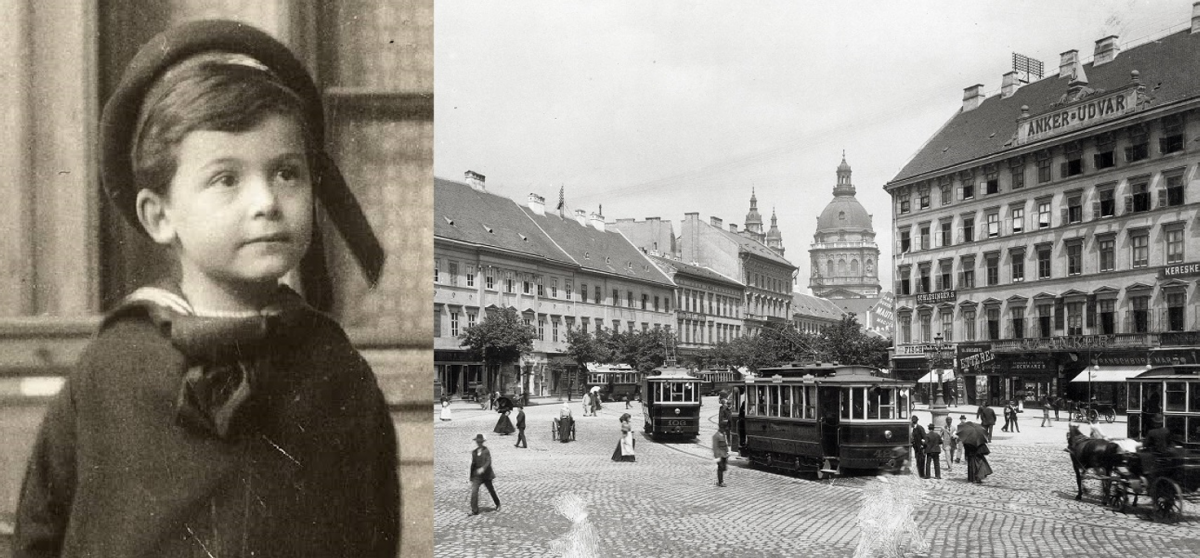


































Hozzászólások
Log in or register to comment!
Login Registration